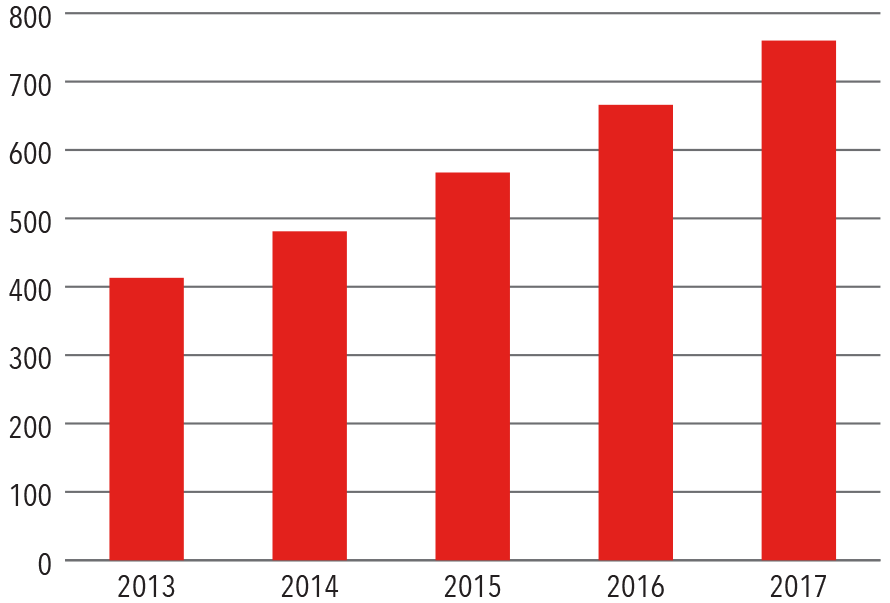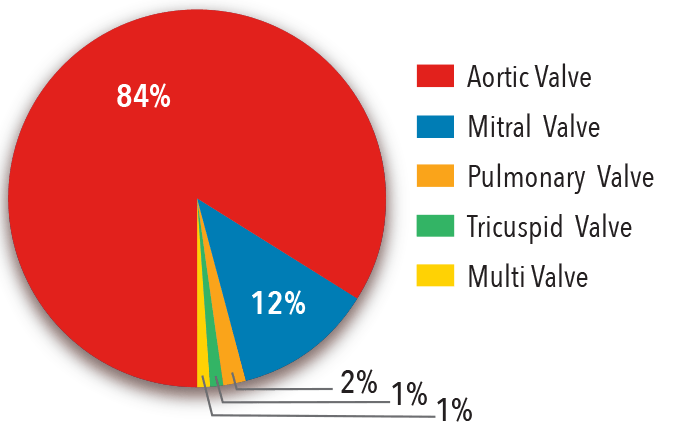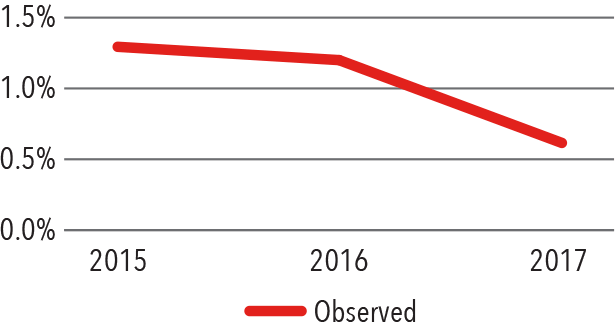Aortic Valve Disease
Transcatheter Aortic Valve Replacement
At NewYork-Presbyterian, transcatheter therapy has become a mainstay of the treatment algorithm for structural heart disease. Over 4,000 TAVR procedures have been performed here since its introduction, and some 500 cases are performed annually by our heart teams. TAVR is generally performed under conscious sedation rather than general anesthesia, and patients are able to recover in an observation unit rather than an ICU.
The majority of patients are discharged home within two days, with lower-risk patients staying in the hospital about 24 hours. The short-term risk of stroke with TAVR is 1 to 2 percent and the mortality rate in many patients is less than 1 percent. While the devices have evolved and the procedure risk has lessened, NewYork-Presbyterian’s cardiac specialists continue to seek improvements.
Reducing Stroke Risk
While stroke rates are lower for TAVR than with surgery, the risk of stroke can be further reduced by preventing embolic debris from traveling to the brain. Columbia faculty have been at the forefront of device technology to address this issue, serving as principal investigators for the Sentinel trial, which confirmed the therapeutic importance of embolic debris capture and removal during TAVR. In June 2017, the Sentinel cerebral protection system for use in TAVR was the first device approved for this purpose by the FDA.
They are now providing leadership in the Reflect trial, which is assessing the safety and efficacy of the TriGUARD 3™ embolic deflection device in TAVR. This particular device is formed to withstand potential interface with the TAVR delivery system and other procedure-related accessories. It is placed via one of two femoral artery access ports typically used in TAVR, thereby eliminating the need for a third puncture site.
WATCH-TAVR Trial
Columbia faculty are also serving as principal investigators in this multicenter trial to evaluate the safety and effectiveness of the left atrial appendage occlusion with WATCHMAN device in the prevention of stroke and bleeding in patients with non-valvular atrial fibrillation undergoing TAVR. NewYork-Presbyterian/Columbia is the only site participating in the trial in New York, and enrollment is ongoing.
Patients undergoing TAVR performed by high-volume physicians (≥80/year) had a significantly lower risk for death, stroke, or acute myocardial infarction compared with those treated by low-volume physicians.
Experience Counts
Weill Cornell faculty spearheaded a first-time study to evaluate transfermoral TAVR volume-outcome relationships at the individual operator level. Their findings, published in the January 14, 2019, issue of JACC: Cardiovascular Interventions, showed that after adjusting for hospital and physician characteristics, patients undergoing TAVR performed by high-volume physicians (≥80/year) had a significantly lower risk for death, stroke, or acute myocardial infarction compared with those treated by low-volume physicians (<24/year).
Being treated by operators who performed 200 procedures during the prior year was associated with significantly lower risks for post-procedural stroke and composite events. Increased TAVR experience of operators is associated with improved risk-adjusted in-hospital outcomes. The researchers analyzed New York Statewide Planning and Research Cooperative System data from 8,771 transfemoral TAVR procedures performed by 207 operators between 2012 and 2016.
Patients undergoing TAVR performed by high-volume physicians (≥80/year) had a significantly lower risk for death, stroke, or acute myocardial infarction compared with those treated by low-volume physicians.
Transcatheter Valve Procedures
At NewYork-Presbyterian, transcatheter therapy has become a mainstay of the treatment algorithm for structural heart disease. Over 4,000 TAVR procedures have been performed here since its introduction, and some 500 cases are performed annually by our heart teams.
Volume
2013 - 2017

Source: NewYork-Presbyterian
Procedures by Anatomic Location
2017

Source: NewYork-Presbyterian
Transcatheter Aortic Valve Procedures
Complications
2017

Source: Vizient Clinical Data Base/Resource ManagerTM used by permission of Vizient. All rights reserved.
In-Hospital Mortality
2015 - 2017

Source: Vizient Clinical Data Base/Resource ManagerTM used by permission of Vizient. All rights reserved.



